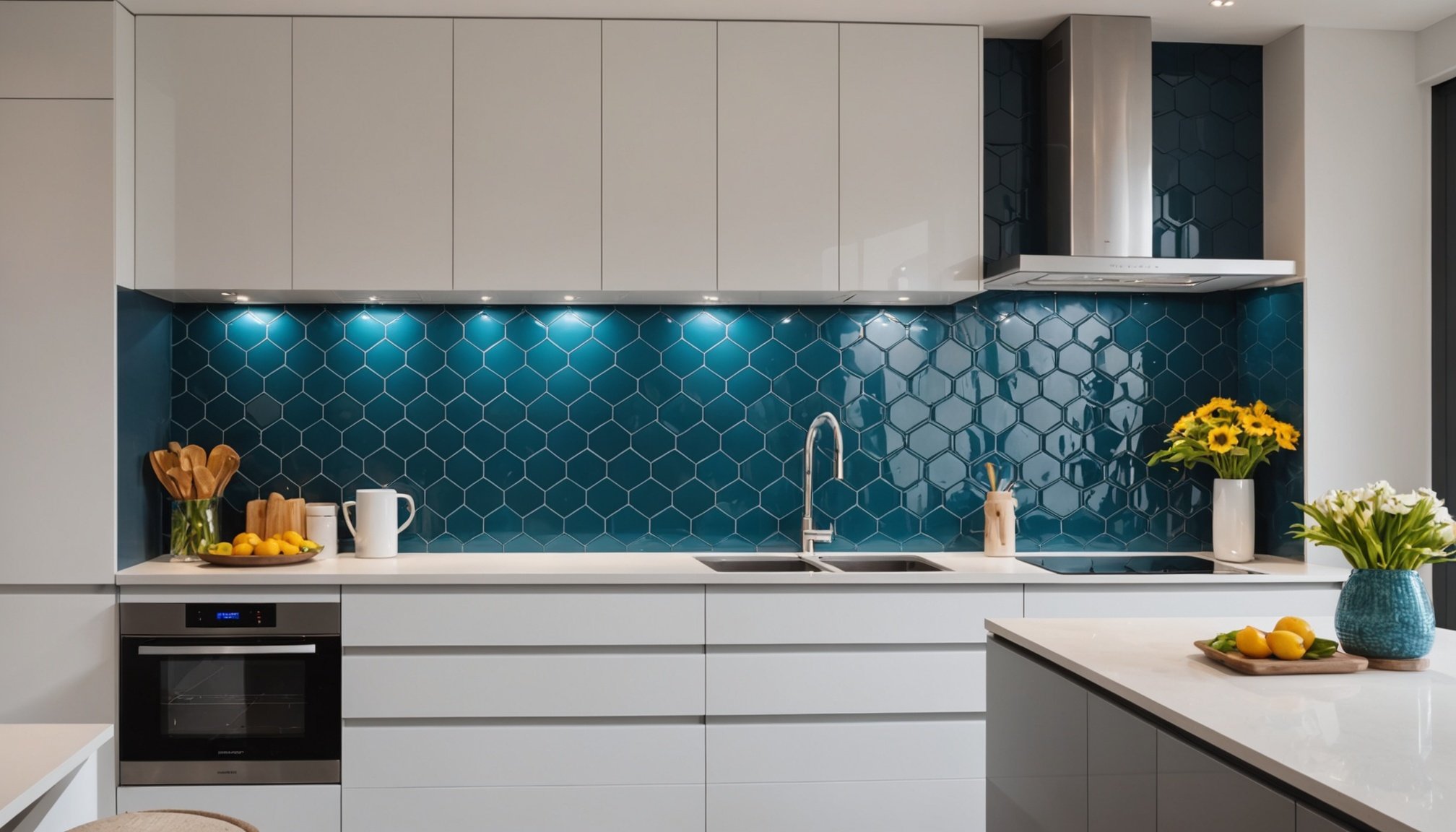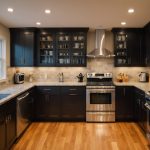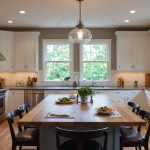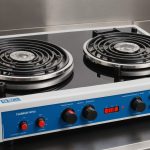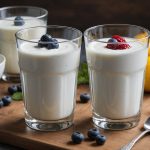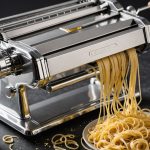A minimalist kitchen thrives on simplicity and efficiency, yet adding the right splashback can elevate its aesthetic. Innovative designs seamlessly blend functionality with style, making your cooking space not only practical but also visually stunning. Explore the latest trends that marry clean lines with unique materials, enabling you to create a harmonious environment. Embrace these fresh concepts to transform your kitchen into a haven of sophistication and tranquility.
Overview of Minimalist Kitchen Aesthetics
Minimalist kitchen design is characterized by its clean lines, uncluttered spaces, and a focus on functionality. This modern design approach emphasizes simplicity, using a limited color palette and sleek materials. The essence of a minimalist kitchen lies in its ability to create a serene and organized environment, allowing for efficient meal preparation and enjoyment.
Additional reading : Exploring Space-Saving Solutions: Unique Retractable Kitchen Cabinet Doors for Compact Areas
One critical element in enhancing minimalist aesthetics is the use of splashbacks. These not only protect walls from spills and stains but also contribute to the kitchen's overall look. Splashbacks in materials like glass, stainless steel, or neutral-toned tiles can seamlessly blend with the minimalist theme, adding a touch of elegance and practicality.
Current trends in minimalist kitchen styles continue to evolve, with a growing emphasis on sustainable materials and smart technology integration.
Topic to read : Essential Features You Should Consider When Choosing Ergonomic Kitchen Cabinet Handles
- Key Characteristics of Minimalist Kitchens:
- Neutral color schemes
- Streamlined cabinetry
- Integrated appliances
These trends reflect a shift towards more eco-friendly and tech-savvy solutions, aligning with the minimalist ethos of reducing excess and focusing on essentials. By incorporating these elements, homeowners can achieve a modern design that is both aesthetically pleasing and highly functional.
Popular Materials for Splashbacks
Exploring the right kitchen splashback materials is crucial for achieving a minimalist look. Each material offers unique advantages and disadvantages, impacting both aesthetics and functionality.
Advantages and Disadvantages
Glass splashbacks are favored for their seamless appearance and easy cleaning. They are highly reflective, which can make a kitchen feel more spacious. However, glass can be prone to scratches and may require professional installation.
Tiles, on the other hand, provide versatility in design and are generally more affordable. They are durable and resistant to heat and moisture. The downside is that grout lines can accumulate dirt, requiring regular maintenance.
Stainless steel is a robust choice, offering a sleek, industrial look that complements minimalist designs. It's heat-resistant and easy to clean, though it can show fingerprints and smudges easily.
Maintenance Considerations
When considering maintenance, glass requires minimal effort, needing only a wipe-down to maintain its shine. Tiles demand more attention due to grout cleaning, while stainless steel needs regular polishing to avoid visible marks.
- Glass: Easy to clean, prone to scratches
- Tiles: Durable, grout maintenance
- Stainless Steel: Sleek, shows fingerprints
Choosing the right splashback material involves weighing these factors to fit your minimalist kitchen aesthetic.
Color Schemes That Complement Minimalist Kitchens
Exploring color options to enhance minimalist aesthetics.
Role of Color in Minimalist Kitchen Designs
Minimalist color schemes play a pivotal role in creating serene and uncluttered kitchen spaces. By focusing on neutral colors, these designs emphasize simplicity and functionality. Neutral tones like whites, greys, and beiges form the backbone of minimalist kitchens, providing a calm backdrop that complements the clean lines and streamlined cabinetry.
Suggested Neutral Color Palettes for Splashbacks
Selecting the right neutral colors for splashbacks can enhance the minimalist aesthetic. Consider using soft whites or light greys for a seamless look that blends with other kitchen elements. These colors not only maintain the minimalist ethos but also offer versatility, allowing homeowners to easily incorporate accent colors.
Ideas for Incorporating Accent Colors in Splashback Designs
While neutral colors dominate minimalist kitchens, introducing accent colors can add personality without overwhelming the space. Consider using subtle hues like muted greens or blues in splashback designs to create visual interest. A well-placed accent color can highlight specific areas, enhancing the overall kitchen design.
- Neutral Colors: Whites, greys, beiges
- Accent Colors: Muted greens, blues
- Minimalist Color Schemes: Balance simplicity with style
By carefully selecting and combining these colors, you can achieve a minimalist kitchen that is both functional and visually appealing.
Innovative Splashback Designs for Minimalist Kitchens
Exploring contemporary splashback designs that enhance minimalist aesthetics.
Geometric and Linear Designs
In the realm of contemporary splashback designs, geometric patterns are gaining popularity. These designs introduce a sense of order and symmetry, aligning perfectly with minimalist principles. Linear designs, featuring clean, straight lines, can add a modern touch to any kitchen. By incorporating geometric patterns, homeowners can achieve a visually striking yet uncluttered look.
Textures and Finishes
Adding depth to minimalist kitchens without cluttering the space can be achieved through the use of various textures and finishes. Textured splashbacks, such as matte or brushed finishes, create visual interest and add a tactile element. These finishes can complement the sleek surfaces of minimalist kitchens while maintaining their simplicity.
Creative Use of Negative Space
Creative uses of negative space in splashback design can further enhance the minimalist aesthetic. By strategically leaving areas unadorned, designers can emphasize the splashback's geometric or textured elements. This approach not only highlights the splashback's contemporary design but also reinforces the kitchen's overall minimalist theme.
- Geometric Patterns: Order and symmetry
- Textures and Finishes: Depth without clutter
- Negative Space: Emphasizes design elements
Incorporating these innovative splashback designs allows for a minimalist kitchen that is both functional and visually captivating.
Integrating Technology into Splashback Designs
Exploring the future of kitchen aesthetics with smart technology.
Overview of Smart Splashback Technology
The integration of smart splashbacks in kitchens is transforming the way we interact with our cooking spaces. These advanced designs incorporate LED lighting and digital displays, offering both functionality and style. Smart splashbacks can adapt to different lighting needs or display cooking instructions, enhancing the overall kitchen experience.
Benefits of LED Lighting within Splashbacks
Incorporating LED lighting into splashbacks provides a multitude of benefits. The adjustable brightness allows for a customized ambiance, while energy efficiency aligns with sustainable design principles. LED lights can accentuate the clean lines and sleek surfaces of minimalist kitchens, creating a visually appealing environment.
- Energy Efficiency: Low power consumption
- Adjustability: Customizable brightness
- Aesthetic Appeal: Enhances minimalist design
Examples of Digital Displays
Digital displays embedded in splashbacks offer innovative solutions for modern kitchens. These displays can show recipes, timers, or even video calls, facilitating multitasking. The seamless integration of technology maintains the minimalist aesthetic while adding a layer of convenience.
- Recipe Display: Easy access to cooking instructions
- Timers and Reminders: Streamline culinary tasks
- Connectivity: Video calls and notifications
By embracing these technologies, homeowners can create a kitchen space that is both functional and stylish.
Installation Tips for Minimalist Splashbacks
Enhance your kitchen design with precise installation techniques.
DIY Splashback Installation
Embarking on a DIY splashback installation can be both rewarding and cost-effective. Begin by measuring your wall space accurately to ensure the splashback fits perfectly. Clean the surface thoroughly to promote strong adhesion. Use a spirit level to align the splashback, applying adhesive evenly. Allow the adhesive to dry completely before removing any protective film.
Professional Installation Considerations
Hiring a professional for splashback installation guarantees precision and expertise. When selecting a professional, verify their experience with minimalist designs. Request a detailed quote to understand the costs involved. Ensure they are familiar with the specific materials you've chosen, as this can affect the installation process and final outcome.
Common Installation Mistakes
Avoid these pitfalls to ensure a flawless finish:
- Incorrect Measurements: Double-check dimensions to prevent fitting issues.
- Inadequate Adhesive Application: Uneven adhesive can lead to weak spots.
- Ignoring Surface Preparation: A clean, dry surface is crucial for durability.
Splashback installation can dramatically transform your kitchen's aesthetic. Whether opting for a DIY approach or professional service, attention to detail is paramount. By understanding these key considerations, you can achieve a seamless, minimalist look that enhances your kitchen's functionality and style.
Budgeting for Splashback Upgrades
Exploring cost-effective options for your kitchen renovation.
Budgeting Tips for Splashback Renovations
When planning a kitchen renovation budget, it's essential to consider the cost of splashbacks. Start by setting a clear budget that aligns with your overall renovation goals. Research affordable splashbacks that fit within your financial plan without compromising on style. Prioritize materials that offer durability and ease of maintenance, ensuring long-term savings.
Cost-Effective Materials for a Minimalist Look
Achieving a minimalist aesthetic doesn't have to be expensive. Consider cost-effective materials such as ceramic tiles, which offer a sleek look at a fraction of the cost of other options. Laminate splashbacks can mimic the appearance of more expensive materials like stone or glass while staying within budget. These materials provide both functionality and style.
High-Impact, Low-Cost Splashback Options
To maximize impact without overspending, explore these options:
- Ceramic Tiles: Versatile and budget-friendly
- Laminate: Imitates high-end materials
- Acrylic: Lightweight and easy to install
By carefully selecting affordable splashbacks, you can enhance your kitchen's aesthetic while adhering to your kitchen renovation budget. These choices ensure a stylish, minimalist look without breaking the bank.
Case Studies of Successful Minimalist Kitchen Designs
Exploring transformative designs through real-world examples.
Showcase of Successful Minimalist Kitchen Transformations
In examining minimalist kitchen case studies, we uncover inspiring transformations that highlight the power of simplicity. Each project demonstrates how strategic design choices create serene, functional spaces. For instance, a cluttered kitchen was transformed by integrating streamlined cabinetry and neutral color schemes, resulting in a tranquil environment.
Analysis of How Splashbacks Contributed to Overall Design
Splashbacks play a pivotal role in these minimalist kitchen transformations. In one case study, a glass splashback was used to enhance light and space, contributing to a more open feel. Another example utilized stainless steel splashbacks, adding an industrial edge while maintaining a clean look. These elements not only protect surfaces but also enhance the kitchen's aesthetic.
Lessons Learned from Each Case Study
From these kitchen case studies, several lessons emerge:
- Prioritize Functionality: Design choices should enhance usability.
- Select Durable Materials: Long-lasting materials reduce maintenance.
- Embrace Neutral Colors: A consistent palette promotes calmness.
These insights from minimalist kitchen designs offer valuable guidance for those seeking to revamp their cooking spaces, emphasizing the importance of thoughtful design and material selection.
Resources for Further Exploration
Delve deeper into kitchen design with these curated resources.
Recommended Suppliers for Modern Splashback Materials
When considering kitchen design resources, selecting the right suppliers is crucial. Notable suppliers offering modern splashback materials include companies specializing in glass, stainless steel, and tile options. These suppliers provide a variety of choices to suit any minimalist aesthetic.
- Glass Suppliers: Known for sleek and seamless designs.
- Tile Suppliers: Offer versatile and durable options.
- Stainless Steel Suppliers: Provide industrial and robust solutions.
Online Galleries and Platforms for Design Inspiration
For those seeking design inspiration, online galleries and platforms offer a wealth of ideas. Websites featuring kitchen design resources showcase innovative splashback designs and minimalist kitchen layouts. These platforms help visualize potential transformations and inspire creativity.
- Houzz: Features a wide range of kitchen designs.
- Pinterest: Offers endless design ideas and trends.
- Design Milk: Focuses on modern and minimalist aesthetics.
Books and Articles for Deeper Understanding
To gain a deeper understanding of minimalist kitchen design, consider exploring books and articles dedicated to this subject. These kitchen design resources provide insights into the principles of minimalism and practical advice for implementing these concepts.
- "The Minimalist Kitchen" by Melissa Coleman
- "Essentialism: The Disciplined Pursuit of Less" by Greg McKeown
- Articles in design magazines like "Dwell" and "Architectural Digest"

